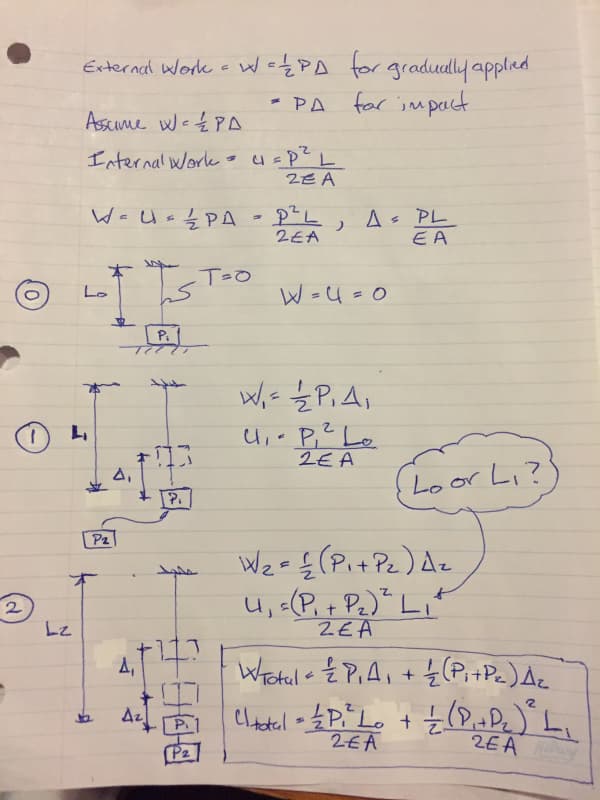cal91
Structural
- Apr 18, 2016
- 294
I'm checking a 3/8" Ø aircraft cable to be used for guardrail and lifeline during construction. Everything is checking out, except for the 3" max deflection requirement for guardrail found under OSHA 1910.29(b)(4)
"When the 200-pound (890-N) test load is applied in a downward direction, the top rail of the guardrail system must not deflect to a height of less than 39 inches (99 cm) above the walking-working surface."
The guardrail is at 42" so 42"-39" = 3" deflection.
With the stretch in the line accounted for I'm getting that I can't have more than an 8 foot length of cable between anchorages, which is impractical. I also know that this cable is used all the time as guardrail for up to 120' between anchorages. I am trying to get this to work for up to 18'0" spans and up to 120'-0" between end anchorage. But that case gives me 12" of deflection even though strength works out.
Just wanted to pick the brains of you fellow eng-tippers (is that what we're called?) about this situation. Do I not even need to apply this requirement since it's only for construction and not permanent?
"When the 200-pound (890-N) test load is applied in a downward direction, the top rail of the guardrail system must not deflect to a height of less than 39 inches (99 cm) above the walking-working surface."
The guardrail is at 42" so 42"-39" = 3" deflection.
With the stretch in the line accounted for I'm getting that I can't have more than an 8 foot length of cable between anchorages, which is impractical. I also know that this cable is used all the time as guardrail for up to 120' between anchorages. I am trying to get this to work for up to 18'0" spans and up to 120'-0" between end anchorage. But that case gives me 12" of deflection even though strength works out.
Just wanted to pick the brains of you fellow eng-tippers (is that what we're called?) about this situation. Do I not even need to apply this requirement since it's only for construction and not permanent?

